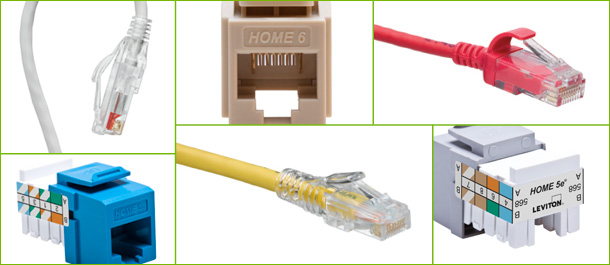Choosing the Right Category Cable for the Home

Residential structured wiring has expanded beyond telephone service distribution to deliver a host of services, including HDTV, Gigabit networking, VoIP, IPTV, Wi-Fi, and broadband Internet. The type of cabling used to support the home network directly impacts overall performance.
What is a Cat?
Category-rated cables (Cat for short) are made of eight copper wires grouped into four pairs. Pairs are color coded (blue, orange, green, and brown), and twisted together to provide resistance to electronic interference from one pair to the other, also called crosstalk. The higher the category rating, the tighter the pair twists. More twists equals more resistance to crosstalk at higher frequencies. Higher category-rated cable is also slightly larger to improve transmission performance.
Choosing the Right Cat
Today, Cat 5e and Cat 6 are the most common cable types used in residential networks. Some home networks can get by with Cat 5e, especially when only a basic data connection for surfing the Internet is required. However, for streaming or high-definition video, consider using a Cat 6 infrastructure. Cat 5e components may be marginally less costly, but Cat 6 provides greater performance (up to twice the bandwidth) and improved network flexibility. Plus, Cat 6 will prepare your home network for future-generation PoE (power over Ethernet) technology, enabling you to power your computer screens and televisions via low-voltage twisted-pair cables instead of a traditional electrical connection. This provides greater flexibility when setting up your home network.
A Strong Home Network Needs Cat 6
If you are going through the trouble of installing a new cable connection, it's worth paying a little extra up front for higher-performing components. Especially since the labor resources needed to install either infrastructure is the same. Future proofing your network now, in preparation for tomorrow’s technologies, is worth the added expense. It can save you the hassle and cost of a complete rip and replace later down the road.
To learn more about Leviton Cat 5e and Cat 6 solutions, visit: leviton.com/copper. For more information about Power over Ethernet, visit: leviton.com/poe.


